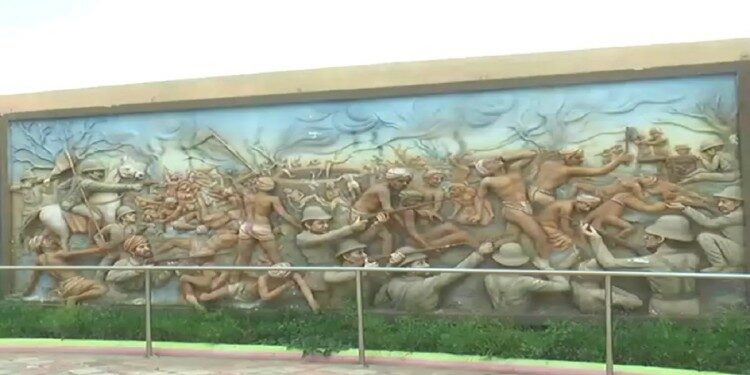In news– On 7th March 2022, the Gujarat government marked 100 years of the Pal-Dadhvav killings, calling it a massacre “bigger than the Jallianwala Bagh”.
History of Pal-Dadhvav massacre-
- The Pal-Dadhvav massacre in which nearly 1,000 tribals (Bhils) were killed, took place on March 7, 1922, in the Pal-Chitariya and Dadhvaav villages of Sabarkantha district, then part of Idar state(Gujarat).
- During the Amalki Ekadashi (just before Holi), villagers had gathered on the banks of river Heir as part of the ‘Eki movement’, led by one Motilal Tejawat.
- The movement was to protest against the land revenue tax (lagaan) imposed on the peasants by the British and feudal lords.
- Tejawat, who belonged to Koliyari village in the Mewad region of Rajasthan, had also mobilized Bhils from Kotda Chhavni, Sirohi, and Danta to participate.
- The Mewad Bhil Corps (MBC), a paramilitary force raised by the British that was on the lookout for Tejawat, heard of this gathering and reached the spot.
- On a command from Tejawat, nearly 2000 Bhils raised their bows and arrows and shouted in unison- ‘We will not pay the tax’.
- The MBC commanding officer, HG Sutton, ordered his men to fire upon them. Bullets rained on them that led to a major stapmade and killing of more than thousand people.
- Gujarat has a near 14 per cent tribal population that resides along its northern-eastern stretch, called the ‘poorvi patti’, bordering the districts of Madhya Pradesh, Rajasthan and Maharashtra.
- The Pal-Dadhvav massacre was brought into focus at the Republic Day parade of 2022.
- The R Day tableau featured a seven-ft statue of Tejawat, inspired by the statue at the memorial.
About Motilal Tejawat-
- Born into a merchant (Baniya) family in the adivasi-dominated Koliyari village, Tejawat was employed by a landlord, where he worked for eight years.
- During this period he saw closely how the landlords exploited tribals and would threaten to beat them with shoes if they did not pay the tax.
- Outraged by the atrocities and exploitation of the tribal people, Tejawat quit the job in 1920 and devoted himself to social work and reform.
- Motilal Tejawat’s immediate source of inspiration was the Bijolia movement.
- Bijolia movement was a peasant movement in the Bijolia jagir of the former Mewar state (in present-day Rajasthan in India) against excessive land revenue exactions.
- The movement continued till 1941 after a bitter struggle lasting about half a century, gained national attention and resisted state oppression.
















